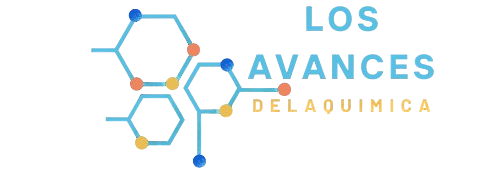1) A Universal Scale of Aromaticity for π-Organic Compounds. M. Alonso, B. Herradón. J. Comp. Chem. 2010, 31, 917-928.
Aromaticity is an essential concept in chemistry, invented to account for the stability, reactivity, molecular structure, and properties of many organic and inorganic compounds. In recent years, numerous methods to quantify aromaticity based on the energetic, magnetic, structural, and electronic properties of molecules have been proposed but none of them is universal. The inability of establishing a universal scale of aromaticity based on a single parameter is due to the multidimensional character of this phenomenon. Consequently, aromaticity analyses should be carried out by employing a set of aromaticity descriptors on the basis of different physical manifestations of aromaticity. Here, we report a universal scale of aromaticity for π-organic compounds based on the Euclidean distance between neurons in a self-organizing map. The most widely used aromaticity indicators have been used as molecular descriptors, and so our approach provides the first scale of aromaticity which contains the energetic, magnetic, and structural aspects of this property. The method is applicable to a wide variety of unsaturated organic compounds and allows quantification of both aromaticity and antiaromaticity. Additionally, the position of a compound on the bidimensional map determinates immediately the following: (a) the group (aromatic, nonaromatic, or antiaromatic) to which the system belongs, (b) their degree of π-electronic delocalization, and (c) the similarity in aromaticity/antiaromaticity between different compounds. This new scale of aromaticity is able to indicate the expected order of aromaticity of analogues of fulvene and heptafulvene, heteroaromatic species, substituted benzenes, and functionalized cyclopentadienyl compounds.
2) X-Ray Diffraction, Solution Structure, and Computational Studies on Derivatives of (3-sec-Butyl-2,3-dihydro-1H-isoquinolin-4-ylidene)acetic Acid: Compounds with Activity as Calpain Inhibitors. M. Alonso, R. Chicharro, C. Miranda, V. J. Arán, M. A. Maestro, B. Herradón. J. Org. Chem. 2010, 75, 342-352.
A thorough experimental and computational study of derivatives of (3-sec-butyl-2,3-dihydroisoquinolin-4-ylidene)acetic acid was performed. Some of these compounds are calpain inhibitors and could be useful as therapeutic agents, since this enzyme is a Ca2+-dependent cysteine protease involved in a wide variety of metabolic and physiological processes, whose over-activation is associated to several pathological conditions. To gain a better understanding of the structure−activity relationships, a structural analysis was carried out with 1H and 13C NMR spectroscopy and DFT calculations together with the X-ray diffraction data of three compounds. The solid state structures showed that the crystal packing as well as the intermolecular interactions depend on the substituent nature of the COOR group. Also, the reactivity of the exocyclic double bond was theoretically evaluated, finding that the more reactive compound is the most potent inhibitor of calpain (IC50 = 25 nM).
3) Substituent effects on the aromaticity of carbocyclic fivemembered rings. M. Alonso, B. Herradón. Phys. Chem. Chem. Phys. 2010, 12, 1305-1317.
The influence of the substituent nature, as well as the number and position of the substituents, on the aromaticity/antiaromaticity of a comprehensive set of derivatives of cyclopentadienyl anion, cyclopentadiene and cyclopentadienyl cation has been analyzed. The aromaticity/antiaromaticity of substituted cyclopentadienyl derivatives has been measured using energetic, magnetic and structural criteria to take into account the multidimensional character of aromaticity. Furthermore, the Euclidean distance values (dj) for all compounds have been estimated using the neural network developed previously. It has been demonstrated that the dj as a scale of aromaticity overcomes the particular limitations of the ASE, Λ, NICS and HOMA indices to describe the changes in the aromaticity of cyclopentadiene ring due to substituent effects. Additionally, it is shown that neural networks are useful tools for establishing structure–property relationships. The results indicate that mostly the aromaticity of cyclopentadiene ring and cyclopentadienyl anion ring decrease upon substitution irrespective of the electronic character of the substituent. The electron-donating groups, especially hydroxyl groups, destabilize carbanion to a larger extent than electron-accepting ones. On the other hand, all the substituents reduce strongly the antiaromaticity of the cyclopentadienyl cation. These results can be useful for the design of new cationic ligands with lowered instability and new cyclopentadienyl ligands with improved stability and reactivity.
4) Synthesis and applications of a chiral-oxygenated 3-chloro-3,6-dihydro-2Hpyran obtained under Overman rearrangement conditions. A. Montero, E. Benito, B. Herradón. Tetrahedron Lett. 2010, 51, 277-280.
A chlorinated side product was formed under Overman rearrangement conditions from a trichloroacetimidate along with the expected allylic amide. The chlorinated product derived from a hex-2-enopyranoside was obtained in a totally stereoselective manner, and it can be a useful synthetic intermediate for chlorinated sugars. In order to improve the isolated yields of either the expected Overman rearrangement product or the chlorinated compound, we carried out a thorough study on the experimental conditions. The application of the latter for the synthesis of potential calpain inhibitors is also reported.
5) Studies on calpain inhibitors. Synthesis of partially reduced isoquinoline-1-thione derivatives and conversion to functionalized 1-chloroisoquinolines. R. Chicharro, M. Alonso, V. J. Arán, B. Herradón. Tetrahedron Lett. 2008, 49, 2275-2279.
Sequential treatment of a (3-substituted-1-thioxo-1,2,3,4-tetrahydroisoquinolin-4-ylidene)acetic acid with thionyl chloride and a nucleophile did not give the expected ester or amide, but a derivative of 2-(3-substituted-1-chloroisoquinolin-4-yl)acetic acid, constituting a simple procedure for the synthesis of functionalized 1-chloroisoquinolines, which can be useful synthetic intermediates. The different reactivity between lactams and thiolactams has been computationally modelled. The activity as calpain inhibitors of both thiolactams and chloroisoquinoline has been measured, finding that some of these compounds are inhibitors in the micromolar range.
6) Decabromobiphenyl (PBB-209) activates the aryl hydrocarbon receptor while decachlorobiphenyl (PCB-209) is inactive. Experimental evidences and computational rationalization of the different behavior of some halogenated biphenyls. M. Alonso, S. Casado, C. Miranda, J. V. Tarazona, J. M. Navas, B. Herradón. Chem. Res. Toxicol. 2008, 21, 643-658.
In rat H4IIE cells permanently transfected with a luciferase gene under the control of AhR, incubation with PBB-209 led to a statistically significant increase of luminescence. In this system, PCB-209 only caused a small induction of luciferase activity. In a fish cell line, only PBB-209 was able to provoke an induction of ethoxyresorufin-O-deethylase activity. Ligand binding to the AhR was studied by means of a cell-free in vitro system in which the activation of AhR is very unlikely to occur without ligand binding. None of the biphenyls studied provoked any activation of AhR in this system. To rationalize the results and to get insight into the molecular mechanism of activation of AhR by PBB-209 as compared with PCB-209, a comprehensive computational study was carried out on these congeners as well as on PCB-126 and PCB-169, two potent AhR activators through ligand binding. The calculations include (i) conformational analysis and dipole moments of each conformer, (ii) aromaticity indices, (iii) molecular electrostatic potentials, (iv) quadrupole moments, (v) electronic and reactivity descriptors, and (vi) dissociation energies of C−Cl and C−Br bonds in model aromatic compounds. It was found that some molecular features of PBB-209, such as the electrostatic potential (EP) and EP-derived descriptors (Politzer’s parameters), indicate that PBB-209 is more similar to PCB-126 and PCB-169 than to PCB-209, which share quite similar geometries based on the substitution pattern. The similarity between PBB-209, PCB-126, and PCB-169 seems to hint that these three compounds can share, at least partially, similar mechanisms of activation of AhR. It is unquestionable that PCB-126 and PCB-169 directly bind AhR and PBB-209 does not. We hypothesize that there are several simultaneous mechanisms for activation of AhR, and the most active compounds act for more than one mechanism.



